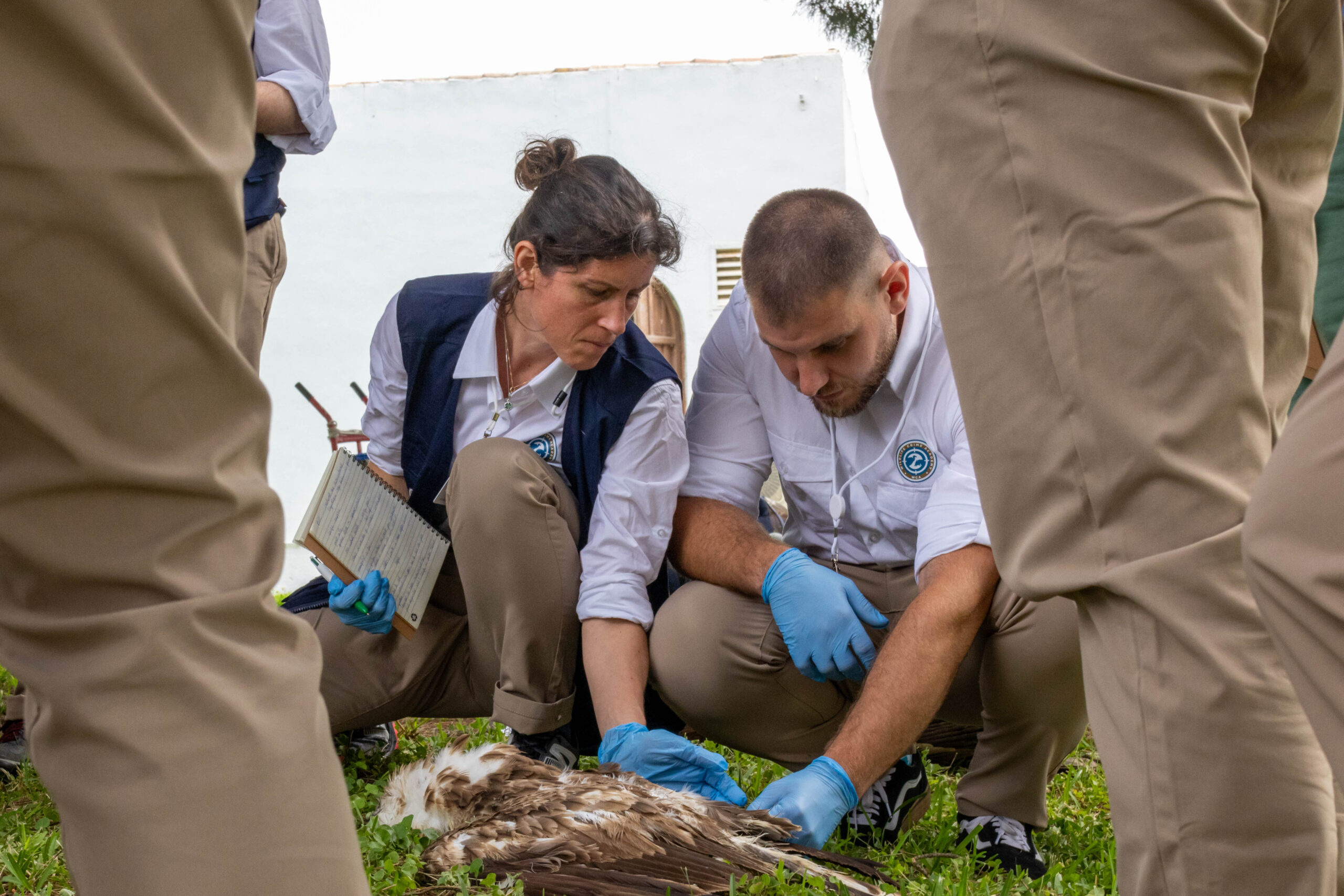
Electrocution and collision with energy infrastructure are leading causes of mortality in vultures. Both these threats can cause adverse effects on vulture populations when not addressed. In Spain, which is a stronghold for vultures and other birds, it is estimated that 33,000 birds die from electrocution and collision with electricity pylons each year, out of which many are vultures. There have been recent developments and events related to collision and electrocution, bringing both good and bad news for vultures and other birds in areas of Castile and León in Spain.
Most significant bird collision point in Avila mitigated
Let’s start with the good news. An area where many vultures and other birds have lost their lives due to energy infrastructure collisions and electrocutions is now safer. Over the past years, a three-kilometre power line stretch located in the municipality of Urraca Miguel, in Ávila, has killed at least 37 Griffon Vultures, five Cinereous Vultures, one Black kite, two buzzards and a corvid. Now, protection measures have been adopted against bird collision and electrocution on these high voltage power lines to protect birds. Cables have been insulating to prevent electrocution, and anti-collision markers have been installed to help birds distinguish the presence of the cables from a distance. These conservation actions were possible thanks to the collaboration between the Colectivo Azálvaro, Fundación de Patrimonio Natural and Fundación Europea para la Cetrería y la Conservación (EFFC).
Many Griffon Vultures die from electrocution in Burgos
Over 20 Griffon Vultures lost their lives in the province of Burgos a few days ago, in an area that is also frequented by the Cinereous Vultures released in the Sierra de la Demanda with GREFA’s Proyecto Monachus. As part of the monitoring efforts of the project, a team went to check areas near power lines visited by Cinereous Vultures in the Sierra de la Demanda area of Burgos and discovered several Griffon Vulture carcasses. On 7 and 12 August, GREFA technicians and Environmental Agents of Castilla y León toured the most dangerous sections of the power lines, finding the remains of up to 21 Griffon Vultures (19 electrocuted and two dead, likely due to collision). To prevent further bird mortality, Proyecto Monachus notified the Servicio Territorial de Medio Ambiente de la Junta de Castilla y León en Burgos, who came on site to remove the carcasses and then informed the Junta de Castilla y León of the incident to begin the process of securing these power lines.

Mitigating the threat of electrocution and collision
The Vulture Multi-species Action Plan (Vulture MsAP), co-developed by the VCF and endorsed by the Convention for Migratory Species, concluded that electricity infrastructure, particularly electrocution and collision, are a a serious but under-estimated threat to vultures.
Pylons and cables without adequate isolation or markers are just one of the many threats that vultures and other birds face daily. Unfortunately, vultures and other birds are not always able to see the wires in front of them, which causes collisions. When flying or landing on dangerous pylons, birds often touch the wires and die as a result of an electric shock. These incidents, as with most human-caused mortalities, are known to contribute to declines in populations of protected bird species, including vultures, so it is important to reduce and eliminate any potential threats.
Once high risk electricity lines have been identified, there are are numerous effective measures that can be used by electricity companies to prevent electrocutions, such as “retrofitting” live wires with durable plastic insulated casings or even replacement of dangerous poles with more modern designs that reduce or eliminate the risk of bird electrocutions. Although this can be logistically challenging and sometimes expensive, many electricity companies are willing and able to cooperate in implementing these measures, not only due to legal obligations to prevent the deaths of protected species, but also due to willingness to engage in conservation actions. In the long term, selecting pole designs that are less dangerous, or even burying lines underground in high-biodiversity areas seem better options. There are many projects, including our own LIFE-funded projects such as LIFE Rupis, Vultures Back to LIFE, LIFE GYPHELP and LIFE Re-Vultures, that are working to tackle the threat of electrocution and collision with electricity infrastructure. The MAVA Foundation is also funding projects across the eastern Mediterranean flyway to minimise these threats.
Mortality database
In 2017, the VCF started a new three-year venture with the MAVA Foundation in collaboration with BirdLife, IUCN, WWF and EuroNatur in order to “document vulture population’s demography and trends – baseline data, causes of mortality and indicators towards the priority species outcome”. This project aims to widen the knowledge on the 4 European vulture species through specific monitoring programmes, as well as to gather already existing information from several sources. In addition to other actions, the project includes the establishment of a European database on mortality data for the four vulture species in Europe and the Mediterranean basin. This will be used as a tool of easy access and usage, which will give us a better overview of local and temporal threats and the real situation of European populations, which will, in turn, help us carry out more accurate conservation actions.
Sign up to the VCF’s newsletter to stay tuned with vulture news!






